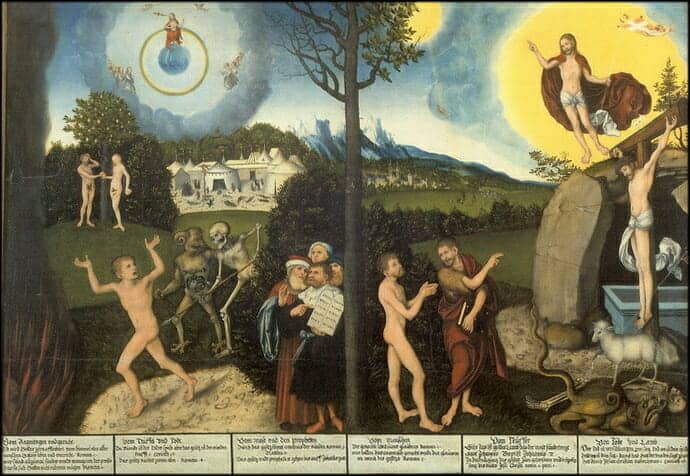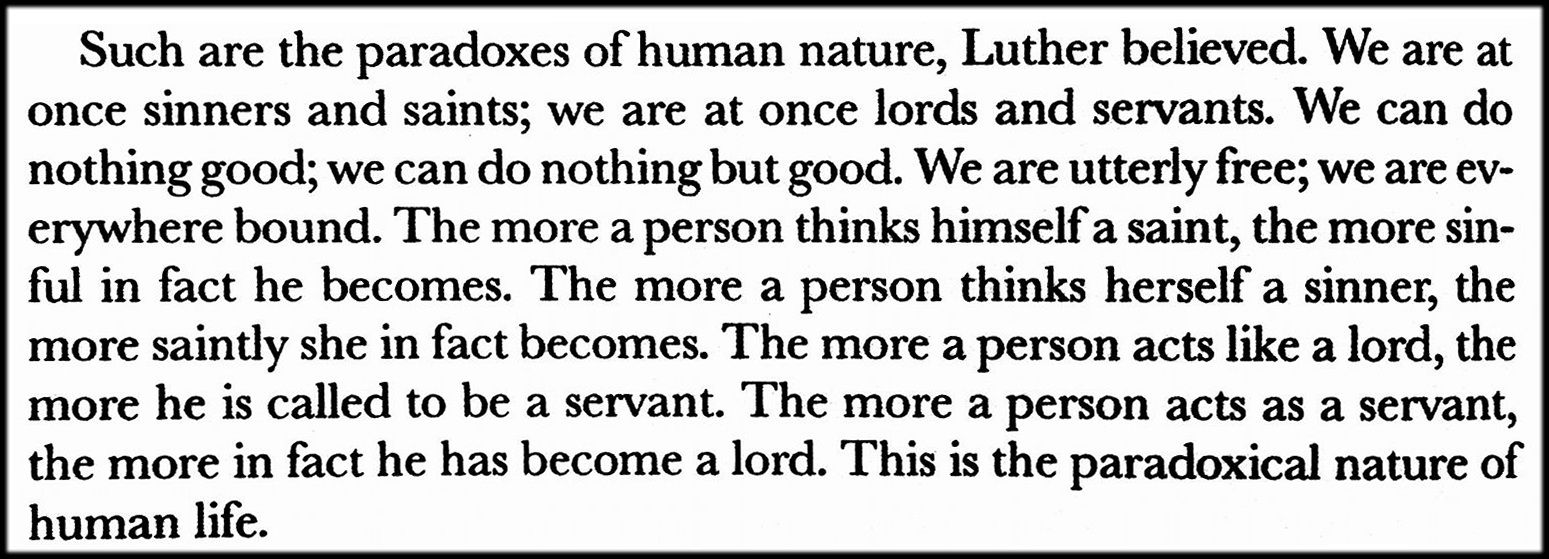Lutheran Hour Ministries (2017) – From Luther’s 95 Theses in 1517 to the Peace of Westphalia in 1648, God was at work in the Reformation. Fierce debates over Scripture, church doctrine, and late medieval church practice led to theological positions articulating salvation as God’s grace in action, with man being left to add nothing to his own salvation. In A Man Named Martin – Part 3: The Movement, viewers will see how the Reformation transformed European society and, eventually, left a profound impression around the globe.
Protestant Reformation
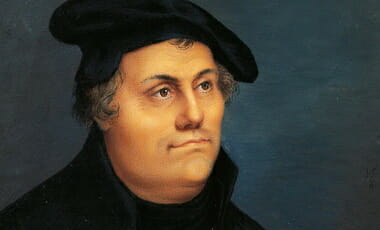
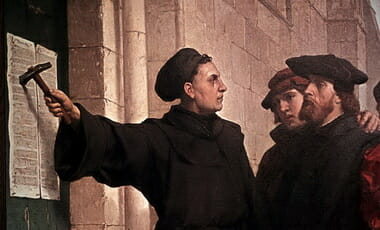
Martin Luther | The Man Who Changed the World Forever (1953)
Martin Luther is a 1953 film biography of Martin Luther. It was directed by Irving Pichel, (who also plays a supporting role), and stars Niall MacGinnis as Luther. It was produced by Louis de Rochemont and RD-DR Corporation in collaboration with Lutheran Church Productions and Luther-Film-G.M.B.H.

The “Office” of Marriage and Love in the Reformation
The reformers’ early preoccupation with marriage was driven, in part, by their jurisprudence. The starting assumption of the budding Lutheran theories of law, society, and politics was that the earthly kingdom was governed by the three natural estates of household, Church, and state. Hausvater, Gottesvater, and Landesvater; paterfamilias, patertheologicus, and patapofiticus— these were the three natural offices through which God revealed Himself and reflected His authority in the world. These three offices and orders stood equal before God and before each other. Each was called to discharge essential tasks in the earthly kingdom without impediment or interference from the other. The reform of marriage, therefore, was as important as the reform of the Church and the state. Indeed, marital reform was even more urgent, for the marital household was, in the reformers’ view, the “oldest,” “most primal,” and “most essential” of the three estates, yet the most deprecated and subordinated of the three. Marriage is the “mother of all earthly laws,” Luther wrote, and the source from which the Church, the state, and other earthly institutions flowed. “God has most richly blessed this estate above all others, and in addition, has bestowed on it and wrapped up in it everything in the world, to the end that this estate might be well and richly provided for. Married life therefore is no jest or presumption; it is an excellent thing and a matter of divine seriousness.”
The reformers’ early preoccupation with marriage was driven, in part, by their politics. A number of early leaders of the Reformation faced aggressive prosecution by the Catholic Church and its political allies for violation of the canon law of marriage and celibacy. Among the earliest Protestant leaders were ex-priests and ex-monastics who had forsaken their orders and vows, and often married shortly thereafter. Indeed, one of the acts of solidarity with the new Protestant cause was to marry or divorce in open violation of the canon law and in defiance of a bishop’s instructions. This was not just an instance of crime and disobedience. It was an outright scandal, particularly when an ex-monk such as Brother Martin Luther married an ex-nun such as Sister Katherine von Bora —a prima facie case of spiritual incest As Catholic Church courts began to prosecute these canon law offenses, Protestant theologians and jurists rose to the defense of their co-religionists, producing a welter of briefs, letters, sermons, and pamphlets that denounced traditional norms and pronounced a new theology of marriage.
Evangelical theologians treated marriage not as a sacramental institution of the heavenly kingdom, but as a social estate of the earthly kingdom. Marriage was a natural institution that served the goods and goals of mutual love and support of husband and wife, procreation and nurture of children, and mutual protection of spouses from sexual sin. All adults, preachers and others alike, should pursue the calling of marriage, for all were in need of the comforts of marital love and of protection from sexual sin. When properly structured and governed, the marital household served as a model of authority charity, and pedagogy in the earthly kingdom and as a vital instrument for the reform of Church, state, and society. Parents served as “bishops” to their children. Siblings served as priests to each other. The household altogether — particularly the Christian household of the married minister — was a source of “evangelical impulses” in society.
Though divinely created and spiritually edifying, however, marriage and the family remained a social estate of the earthly kingdom. All parties could partake of this institution, regardless of their faith. Though subject to divine law and clerical counseling, marriage and family life came within the ,jurisdiction of the magistrate, not the cleric; of the civil law, not the canon law. The magistrate, as God’s vice-regent of the earthly kingdom, was to set the laws for marriage formation, maintenance, and dissolution; child custody, care, and control; family property, inheritance, and commerce.
Political leaders rapidly translated this new Protestant gospel into civil law. Just as the civil act of marriage often came to signal a person’s conversion to Protestantism, so the Civil Marriage Act came to symbolize a political community’s acceptance of the new Evangelical theology. Political leaders were quick to establish comprehensive new marriage laws for their polities, sometimes building on late medieval civil laws that had already controlled some aspects of this institution. The first reformation ordinances on marriage and family life were promulgated in 1522. More than sixty such laws were on the books by the time of Luther’s death in 1546. The number of new marriage laws more than doubled again in the second half of the sixteenth century in Evangelical portions of Germany. Collectively, these new Evangelical marriage laws: (1) shifted primary marital jurisdiction from the Church to the state; (2) strongly encouraged the marriage of clergy; (3) denied that celibacy, virginity, and monasticism were superior callings to marriage; (4) denied the sacramentality of marriage and the religious tests and impediments traditionally imposed on its participants; (5) modified the doctrine of consent to betrothal and marriage, and required the participation of parents, peers, priests, and political officials in the process of marriage formation; (6) sharply curtailed the number of impediments to betrothal and putative marriages; and (7) introduced divorce, in the modern sense, on proof of adultery, malicious desertion, and other faults, with a subsequent right to remarriage at least for the innocent party. These changes eventually brought profound and permanent change to the life, lore, and law of marriage in Evangelical Germany.
John Witte, Jr., Law and Protestantism: The Legal Teachings of the Lutheran Reformation (Cambridge, United Kingdom: Cambridge University Press, 2002), 200-202.
God’s Ideal Should Be Mine
Persons should accept marriage not only as a duty that served society, but also as a remedy against sexual sin. Since the fall into sin, lust has pervaded the conscience of every person, the Lutheran reformers insisted. Marriage has become an absolute necessity of sinful humanity, for without it, the person’s distorted sexuality becomes a force capable of overthrowing the most devout conscience. A person is enticed by his or her own nature to prostitution, masturbation, voyeurism, homosexuality, and sundry other sinful acts. The gift of marriage, Luther wrote, should be declined only by those who have received God’s gift of continence. “Such persons are rare, not one in a thousand, for they are a special miracle of God.” The Apostle Paul has identified this group as the permanently impotent and the eunuchs; few others can claim such a unique gift.
This understanding of the created origin and purpose of marriage un-dergirded the reformers’ bitter attack on celibacy and monasticism. To require celibacy of clerics, monks, and nuns was beyond the authority of the church and ultimately a source of great sin. Celibacy was for God to give, not for the church to require. It was for each individual, not for the church, to decide whether he or she had received this gift. By demanding monastic vows of chastity and clerical vows of celibacy, the church was seen to be intruding on Christian freedom and violating scripture, nature, and common sense. By institutionalizing and encouraging celibacy the church was seen to prey on the immature and the uncertain. By holding out food, shelter, security, and opportunity, the monasteries enticed poor and needy parents to condemn their children to celibate monasticism. Mandatory celibacy, Luther taught, was hardly a prerequisite to true service of God. Instead, it led to “great whoredom and all manner of fleshly impurity and… hearts filled with thoughts of women day and night.” For the consciences of Christians and non-Christians alike are infused with lust, and a life of celibacy and monasticism only heightens the temptation.
John Witte, Jr., From Sacrament to Contract: Marriage, Religion, and Law in the Western Tradition (Louisville, KY: Westminster John Knox Press, 1997), 50.
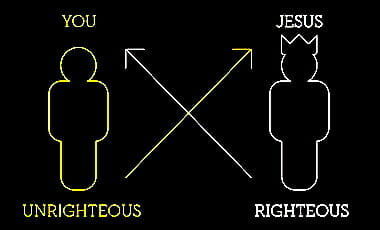
Double Imputation – Better Than A Double Rainbow
Imputed righteousness is a theological concept directly related to the doctrine of Justification. It is particularly prevalent in the Reformed tradition.
“Justification is that step in salvation in which God declares the believer righteous. Protestant theology has emphasized that this includes the imputation of Christ’s righteousness (crediting it to the believer’s “account”), whereas Roman Catholic theology emphasizes that God justifies in accord with an infused righteousnessmerited by Christ and maintained by the believer’s good works,” (Elwell Evangelical Dictionary). Imputed righteousness therefore means that upon repentance and belief in Christ, individuals are forensically declared righteous. This righteousness is not the believer’s own, rather it is Christ’s own righteousness ‘imputed’ to the believer.
A primary line of argumentation for this doctrine maintains that perfect righteousness or holiness is necessary to be with God. All mankind “fall short of the glory of God” (Rom 3:23) because all their ‘righteousness’ is like filthy rags (Is 64:6) before the throne of God, and so all are “dead in their trespasses and sins” (Eph 2:1), and as a result “will not come into [God’s] light for fear that their evil deeds will be revealed” (John 3:20). All mankind is in this predicament because all are the offspring of Adam and Eve (Rom 5) who originally sinned against God. As a result of Adam’s fall, the world was cursed and sin entered the world. But upon confession of one’s own sin and faith in Christ’s death and resurrection, the sinner is justified and counted as having the righteousness of Christ.
[….]
Imputed righteousness is one of the classic doctrines of Protestantism and traces back through the Reformers – chiefly John Calvin and Martin Luther. These men stood against the Roman Catholic doctrine of infused righteousness where the righteousness of the saints and of Christ is gradually infused to the believer through the sacraments. For the Catholic, infused righteousness either gradually dissipates as the believer takes part in worldly sins or is enhanced by good works. If the believer dies without having the fullness of righteousness, coming in part from the last rites, he or she will temporarily spend time in purgatory until the sinful status is purged from his or her record.
[….]
- Imputed Righteousness Defended, by William Romaine, preached in London, 1759
- The Doctrine of Imputed Righteousness, by John Gill
- The doctrine of Justification by Faith, through the Imputation of the Righteousness of Christ, by John Owen
- Imputed Righteousness: The Evangelical Doctrine, by R. C. Sproul
- Imputation, by B. B. Warfield
- Imputation: The Sinner’s Only Hope, by Thomas K. Ascol
- What is Imputation? (Part 1) (Part 2), by W. E. Best

Tradition: Catholic/Protestant Views
Gregg Allison and Chris Castaldo, The Unfinished Reformation: What Unites and Divides Catholics and Protestants After 500 Years (Grand Rapids, MI: Zondervan, 2016), 68-72.
…. How does God speak to the world through such revelation? A major difference between Catholics and Protestants is found in the answer to this question.
Catholics affirm that God speaks to the world through Tradition and Scripture. Similar to the twofold way that Jesus’ apostles communicated the gospel—orally, through preaching, and in writing, through the biblical text—so God communicates to his people today in a twofold pattern: the teaching, or Tradition, of the Church’s bishops, who are the successors of the apostles, and Scripture. “Sacred Tradition and Sacred Scripture are bound closely together and communicate one with the other. For both of them, flowing out of the same divine well-spring, come together in some fashion to form one thing and move toward the same goal” (CCC 80). Thus, these two modes are two streams of one source of divine authority.
Tradition is “the Word of God which has been entrusted to the apostles by Christ the Lord and the Holy Spirit” (CCC 81). This oral communication was in turn handed over by the apostles to their successors, the bishops of the Church, who maintain this Tradition and, on occasion, proclaim it as Church doctrine. For example, the Church declares the immaculate conception of Mary and her bodily assumption (to be treated later) as part of Tradition. The other mode of divine revelation is Scripture. Though Catholics and Protestants stand together in their belief that the Bible is the God-breathed, written revelation of God, they part company on many other points in their understanding of Scripture. Significantly, the Catholic Church “does not derive her certainty about all revealed truths from the holy Scriptures alone. Both Scripture and Tradition must be accepted and honored with equal sentiments of devotion and reverence” (CCC 82).
Against the Catholic affirmation of Scripture and Tradition as authoritative divine revelation, Protestants assert the principle of sola Scriptura: Scripture, and Scripture alone, is authoritative divine revelation. God speaks to the world through his Word, which is written Scripture only, not Scripture plus Tradition. This Protestant critique of Tradition is grounded on several points.
First, Protestants believe that the Catholic position has thin biblical support. For example, to buttress their position, Catholics appeal to Jesus’ explanation to his disciples: “I still have many things to say to you, but you cannot bear them now” (John 16:12). They claim this passage as an example of Jesus underscoring the necessity of both Scripture and Tradition—what he could reveal to them as he was speaking with them, and what he would need to reveal to them later, when they were able to absorb it.
The Protestant response insists that this interpretation misses the point of that interaction. It is simply telling us that as Jesus was speaking with his disciples, they could not grasp his revelation—what he was saying to them at that moment. Indeed, in short order, they would express utter confusion about his impending death (John 16:16-24). Even when they thought they could understand the unfolding calamity, Jesus informed them that they would all abandon him (John 16:25-33), and soon afterward devil-prompted Judas was poised to betray him (John 13:2; 18:1-8), and Peter denied ever knowing Jesus (John 18:15-18, 25-27).
Following Jesus’ crucifixion and resurrection, however, the disciples received the Holy Spirit. As Jesus had promised, the Spirit taught the disciples all things, brought to their remembrance all that Jesus had said to them, and guided them into all the truth (John 14:26; 16:13). Having removed the prior dullness and ignorance that had characterized the disciples, the Holy Spirit moved those who wrote Scripture to communicate the whole of divine revelation (our New Testament). This work was exactly what Jesus taught about his sending the Holy Spirit to inspire them to write Scripture. Protestants believe that, understood in context, there was no need for supplemental communication—Tradition—alongside of Scripture.1
Second, Protestants believe that the Catholic view has thin historical support as well. It is true that the apostles communicated the gospel both orally, through their preaching, and eventually in writing, through the New Testament. But when Paul points out “so then, brothers, stand firm and hold to the traditions that you were taught by us, either by our spoken word or by our letter” (2 Thess. 2:15), he is not saying that his oral teaching and his written communication consisted of different revelations which supplement each other. On the contrary, these two delivery systems presented the same divine revelation. The difference was in the form, not the content.
The early church did have a type of tradition: the doctrine that the apostles transmitted provided a proper understanding of Scripture and underscored sound doctrine. It stood in opposition to the wrong biblical interpretations of the time and the misguided beliefs of heretics. The early church’s “rule of faith” or “canon (standard) of truth” was a summary of its essential doctrines based on Scripture. The early creeds—for example, the Apostles’ Creed and the Chalcedonian Creed—affirmed the doctrines of the Trinity and of Christ derived very carefully from Scripture. Protestants embrace this type of tradition, finding it to be a fine source of wisdom from the past. But this is far from the Catholic notion of Tradition.
In fact, it was not until the fourteenth century that the Catholic Church began to make novel claims about Tradition, granting unwritten communication by Church leaders authoritative status as doctrine outside of, and in addition to, Scripture. Such an idea of Tradition is a relatively late development and is quite different from the notion as found in Scripture and in the early church.2
Standing opposed to the Catholic view of Scripture and Tradition as two modes of divine revelation, Protestants hold to the sufficiency and necessity of Scripture. Scripture is sufficient in that it provides everything that people need to be saved from sin and death, and everything that Christians need to please God fully. Specifically, God-breathed Scripture equips believers “for every good work” (2 Tim. 3:16-17). Protestants see doctrines like the immaculate conception and bodily assumption of Mary as unnecessary and unbiblical. Protestants don’t need these doctrines to possess and believe the fullness of divine revelation. They don’t need practices like the sacrament of penance and praying for the dead in order to know and do all that God requires of them. They don’t need to believe that when they take the Lord’s Supper, the bread and the wine are transubstantiated into the body and blood of Christ. These doctrines, practices, and beliefs are extra-biblical, not from Scripture alone. Thus, Scripture’s sufficiency and the principle of sola Scriptura—”Scripture alone”—are closely connected and contradict the need for Catholic Tradition.3
Scripture is necessary in that it is essential for knowing the way of salvation, for progressing in godliness, and for understanding God’s will. To put it another way, apart from Scripture there can be no awareness of salvation, growth in holiness, and knowledge of God’s will.4 Catholics, on the other hand, would maintain that Scripture is necessary for the well-being of the Church: for the Church to be robustly all that God intends it to be, Scripture is necessary. But Catholics would not hold that Scripture is necessary for the being of the Church: if Scripture were to be lost, the Church could still exist because it would still have Tradition, part of divine revelation. Protestants insist that the Church would lose its way without Scripture: if Scripture were to be lost, the Church would cease to exist because all of divine revelation would have disappeared.
How does God speak to the world? Catholics respond to this question by saying “through Scripture and Tradition.” Protestants reply, “through Scripture alone.”
FOOTNOTES 1. This affirmation does not mean that Protestantism ignores or rejects the theological wisdom that it has inherited from the church throughout the ages (a point to be made shortly). 2. Factors that contributed to this development included: (1) exaggerated and indefensible claims for papal authority not only over the Catholic Church but the entire world as well; (2) theoretical debates over which of the two options—the authority of Scripture and the authority of the Church—is supreme; (3) the introduction of the idea of apostolic succession; and (4) the novel claim that, because the Church had determined the canon of Scripture, the Church therefore possesses special revelation that is not found in Scripture. See Gregg R. Allison, Historical Theology: An Introduction to Christian Doctrine (Grand Rapids: Zondervan, 2011), especially chapters 4 and 3. In more detail, Protestants gratefully use tradition (not Tradition, as in the Catholic sense), or wisdom from the past, as a servant to help their churches engage in the proper understanding and application of Scripture and the formulation of sound doctrine. 4. This attribute does not mean that people have to possess a written copy of Scripture and be able to read it. Rather, in the case of the majority of people today in whose language Scripture has yet to be translated and/or if those people are illiterate, they only need to be able to understand oral communication. Scripture read and heard is God’s necessary Word for them.
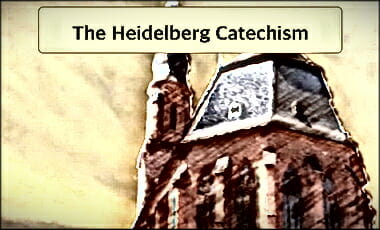
Zacharias Ursinus | Caspar Olevianus (Heidelberg Catechism)
Zacharias Ursinus (1534-1583), a sixteenth century German theologian, born Zacharias Baer in Breslau (now Wroc?aw, Poland). Like all young scholars of that era he gave himself a Latin name from ursus, meaning bear. He is best known as a professor of theology at the University of Heidelberg and co-author with Caspar Olevianus (1536-1587) of the Heidelberg Catechism…. (THEOPEDIA)
The Heidelberg Catechism is a document used in Reformed churches to help teach church doctrine. It takes the form of a series of questions and answers to help the reader better understand the material. It has been translated into many languages and is regarded as the most influential Reformed catechism.
Elector Frederick III, sovereign of the Palatinate from 1559 to 1576, appointed Zacharias Ursinus and Caspar Olevianus, to write a Reformed catechism based on input from the leading Reformed scholars of the time. One of its aims was to counteract the teachings of the Roman Catholic Church regarding theology, basing each statement on the text of the Bible…… (THEOPEDIA)
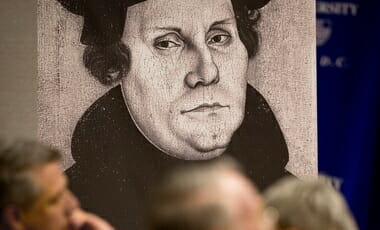
The Insanity of Luther (R. C. Sproul)
R. C. Sproul’s popular lecture on Protestant Reformer Martin Luther.
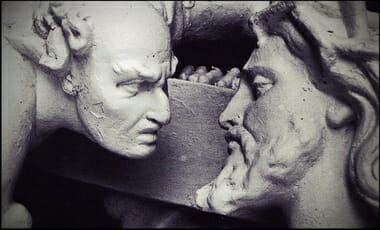
Luther’s Dialectics (Two Kingdoms) |Updated|
“[T]he paradox is that God must destroy in us, all illusions of
righteousness before he can make us righteous…”
~ Martin Luther
(Click To Enlarge – More About This Painting Below)
Luther LOVED Paul’s letter to the Romans. In this letter we find a battle of this “two-kingdom” idea (7:14-25[a]), which surely made him meditate on these things listed below.
A WILDERNESS OF CASUISTRY
In 1957, the great Reformation historian Johannes Heckel called Luther’s two-kingdoms theory a veritable Irrgarten, literally “garden of errors,” where the wheats and tares of interpretation had grown indiscriminately together. Some half a century of scholarship later, Heckel’s little garden of errors has become a whole wilderness of confusion, with many thorny thickets of casuistry to ensnare the unsuspecting. It is tempting to find another way into Lutheran contributions to legal theory. But Luther’s two-kingdoms theory was the framework on which both he and many of his followers built their enduring views of law and authority, justice and equity, society and politics. We must wander in this wilderness at least long enough to get our legal bearings.
Luther was a master of the dialectic — of holding two doctrinal opposites in tension and of exploring ingeniously the intellectual power of this tension. Many of his favorite dialectics were set out in the Bible and well rehearsed in the Christian tradition: spirit and flesh, soul and body, faith and works, heaven and hell, grace and nature, the kingdom of God versus the kingdom of Satan, the things that are God’s and the things that are Caesar’s, and more. Some of the dialectics were more uniquely Lutheran in accent: Law and Gospel, sinner and saint, servant and lord, inner man and outer man, passive justice and active justice, alien righteousness and proper righteousness, civil uses and theological uses of the law, among others.
Luther developed a good number of these dialectical doctrines separately in his writings from 1515 to 1545 — at different paces, in varying levels of detail, and with uneven attention to how one doctrine fit with others. He and his followers eventually jostled together several doctrines under the broad umbrella of the two-kingdoms theory. This theory came to describe at once: (1) the distinctions between the fallen realm and the redeemed realm, the City of Man and the City of God, the Reign of the Devil and the Reign of Christ; (2) the distinctions between the sinner and the saint, the flesh and the spirit, the inner man and the outer man; (3) the distinctions between the visible Church and the invisible Church, the Church as governed by civil law and the Church as governed by the Holy Spirit; (4) the distinctions between reason and faith, natural knowledge and spiritual knowledge; and (5) the distinctions between two kinds of righteousness, two kinds of justice, two uses of law.
When Luther, and especially his followers, used the two-kingdoms terminology, they often had one or two of these distinctions primarily in mind, sometimes without clearly specifying which. Rarely did all of these distinctions come in for a fully differentiated and systematic discussion and application, especially when the jurists later invoked the two-kingdoms theory as part of their jurisprudential reflections. The matter was complicated even further because both Anabaptists and Calvinists of the day eventually adopted and adapted the language of the two kingdoms as well — each with their own confessional accents and legal applications that were sometimes in sharp tension with Luther’s and other Evangelical views. It is thus worth spelling out Luther’s understanding of the two kingdoms in some detail, and then drawing out its implications for law, society, and politics.
John Witte, Jr., Law and Protestantism: The Legal Teachings of the Lutheran Reformation (Cambridge, United Kingdom: Cambridge University Press, 2002) ,94-95.
More about the painting. Be aware that the text below may be imperfect as it was “Google Translated” ~ via WIKI
- ARTIST: Lucas Cranach Starszy (1472–1553)
- NAME of PAINTING: Cranach Law and Grace Gotha
According to the letters of the Apostle Paul, man’s way out of condemnation, sin and law is presented to eternal life, faith and grace. Since for Martin Luther sin is inextricably linked to the human being, the believer of the Mosaic law needs to be aware of his sinfulness. He must realize that he will fail and despair of the commandments of the punishing Old Testament God. This despair is the prerequisite for salvation through Christ and the Gospel. According to the differentiation made by Luther, the tree in the center of the image separates the contrasted events from the Old and New Testaments. In the left half of the law, the tree of life is dried, on the right side of the gospel it bears greening branches. On the left, death and the devil chase the sinful man into hellish fire while looking to the right to Moses, who points to the tablets of the Ten Commandments in a group of prophets of the Old Testament. Representations of the sin and the Last Judgment in the wide landscape show the origin and punishment of human misconduct. The scene of the bronze serpent from the Old Testament, which is important to Luther, typologically points to the crucifixion and shows the salvation of the Israelites before the poison by following the direction of God.
Right on the right of the tree, John the Baptist can be seen along with the naked man on the left. John, as the last prophet before Christ, stands for Luther between the law and the gospel, which is why he has the role of mediator. He directs the attention of the naked, who stands completely calmly and with folded hands, to the Crucified at the right edge of the picture. From the side-wound of Christ is a stream of blood, which extends over nearly the whole width of the right half, and goes down on the breast of the naked. The dove of the Holy Spirit appears in the stream of blood. It is shown here that only Christ, who died vicariously for man and whose good news is transmitted by the Holy Spirit, can abolish the sentence by the law. Only by his faith, sola fide, does the man of divine forgiveness participate in the form of the delivering blood-stream. By the risen Christ, who rises above the grave-cave behind the cross, the dead and the devil who pursued the sinner on the left side are banned: both lie conquered before the cross, under the Lamb of God, like the Risen One The victory flag. The sinner of the law is, however, a righteous one, with which the Gotha image illustrates the aspect of simul iustus et peccator. At the gates of Bethlehem, in the background of the right, the Annunciation appears to the shepherds. Like the raising of the brazen serpent, which the eye of the beholder finds right on the other side of the tree, this scene shows the recognition of God’s Word by man. For the viewer, it is made clear that the law and the gospel proclaim the same joyous message which always leads to Christ. Quotations from the Old and New Testaments in the lower part of the table underline the statement and also provide the biblical legitimation of the representation.
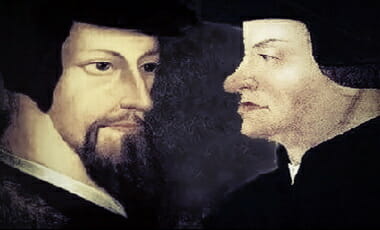
John Calvin & Ulrich Zwingli | The Drowning of the Anabaptists
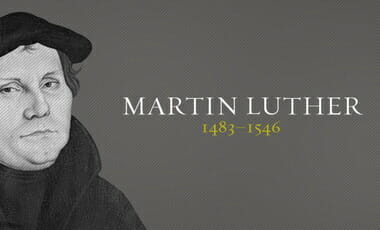
Martin Luther: The Wild Boar |Erwin Lutzer|
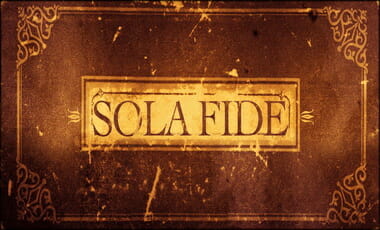
Sola Fide: Faith Alone | Erwin Lutzer and R. C. Sproul
College Park Church (April 2017) – Lecture by Erwin Lutzer.
R. C. Sproul speaks on the doctrine of justification by faith alone and how it was debated among Roman Catholic and Protestant Christians.

Grace In The Reformation [of my heart]
When I was incarcerated, and the Lord had my time, I was reading through the Bible and a section I absolutely fell in love with was Hosea. I, like Israel, was ungrateful and unfaithful to the gift in contract that was offered to me (free) years earlier. God weighed upon me heavily by showing my infidelity to Him… my Master. My Groom. I was married to Him in Grace, and really should have become one with Him (Genesis 2:24 | Romans 6 | Hosea 1).
7 Let us rejoice, be glad, and give him glory,
because the marriage of the lamb has come
and his bride has made herself ready.
8 She has been given the privilege of wearing fine linen,
dazzling and pure.”
9 Then the angel told me, “Write this: ‘How blessed are those who are invited to the marriage supper of the lamb!’”… (ISV)
But I followed my carnal nature (Romans 7:14-24), and forsook my Creator (Hosea 2 | Daniel 9:7). But in that jail cell I realized just how much He loved me. God reached down in that dark time in my life and showed me the passion He has for me (Song of Solomon 8:6-7 | Luke 15:4-7), Since God is love (1 John 4:8 | Psalm 145:8) ~and FIRST loved me~ (1 John 4:19 | John 3:16-17 | Romans 5:8), He is right to be jealous when His bride serves other God’s (Exodus 20:4-5 | 2 Corinthians 11:2). And so, He reconciled me to Himself faithfully as He promised (Hosea 3 | Hebrews 6:13)… for God cannot lie (Titus 1:2)… and it is because of this I grab hold of Christ, faithfully (Philippians 3:12 | Hebrews 10:23). I was still not fully in awe of Him and still had to struggle through my pride and selfishness, but because of His promise and access to His faith, I am promised completion in the race (Hebrews 12:1-3)….
…Galatians 2:16-17 says,
“…yet we know that a person is not justified by the works of the law but by the faithfulness of Jesus Christ. We, too, have believed in Christ Jesus so that we might be justified by the faith of Christ and not by the works of the law, for no human being will be justified by the works of the law.” (International Standard Version [ISV])
~ According to the text in the ISV, Christ’s faith — not ours — does the justifying. It is His focus of attention, not ours, that does the work. (The “onus” then is put in proper perspective.) As an example from one of my favorite verses, Philippians 1:6:
- “I am sure of this, that He who (a) started a good work in you will (b) carry it on to completion until the (c) day of Christ Jesus.”
To be clear:
(a) HE started the Good work [salvation];
(b) He will carry it out;
(c) He will complete it.
Which is why I LOVE this excerpt about Grace in the Reformation.
- Michael Reeves and Tim Chester, Why The Reformation Still Matters (Wheaton, IL: Crossway Books, 2016), 84-88.
Grace in the Reformation
Luther’s Reformation message of salvation by grace alone could hardly have looked more different when compared with that old pre-Reformation teaching of his about salvation by grace. This is how he began to talk: “He is not righteous who does much, but he who, without work, believes much in Christ.” Here grace is not about God’s building on our righteous deeds or helping us to perform them. God, Luther began to see, was the one “who justifies the ungodly” (Rom. 4:5), not one who simply recognizes and rewards those who manage to make themselves godly. God is not one who must build on our foundations; he creates life out of nothing. It meant that, instead of looking to God for assistance and then ultimately relying on himself, Luther was turning to rely entirely on Christ, in whom all righteousness is achieved. “The law says, ‘do this,’ and it is never done. Grace says, ‘believe in this,’ and everything is already done.”
Here Luther found a message so good it almost seemed incredible to him. It was good news for the repeated failure, news of a God who comes not to call the righteous but sinners (Matt. 9:13). Not many today find themselves wearing hair shirts and enduring all-night prayer vigils in the freezing cold to earn God’s favor. Yet deep in our psyche is the assumption that we will be more loved when (and only when) we make ourselves more attractive—both to God and to others. Into that, Luther speaks words that cut through the gloom like a glorious and utterly unexpected sunbeam:
The love of God does not find, but creates, that which is pleasing to it…. Rather than seeking its own good, the love of God flows forth and bestows good. Therefore sinners are attractive because they are loved; they are not loved because they are attractive.
In Reformation thought, grace was no longer seen as being like a can of spiritual Red Bull. It was more like a marriage. In fact when Luther first sought to explain his Reformation discovery in detail to the world, it was the story of a wedding that framed what he said. Drawing on the romance of the lover and his beloved in Song of Solomon (especially 2:16, “My beloved is mine, and I am his”), he told the gospel as the story of the “rich and divine bridegroom Christ” who “marries this poor, wicked harlot, redeems her from all her evil, and adorns her with all his goodness.” At the wedding a wonderful exchange takes place whereby the king takes all the shame and debt of his bride, and the harlot receives all the wealth and royal status of her bridegroom. For Jesus and the soul that is united to him by faith, it works like this:
Christ is full of grace, life, and salvation. The soul is full of sins, death, and damnation. Now let faith come between them and sins, death, and damnation will be Christ’s, while grace, life, and salvation will be the soul’s; for if Christ is a bridegroom, he must take upon himself the things which are his bride’s and bestow upon her the things that are his. If he gives her his body and very self, how shall he not give her all that is his? And if he takes the body of the bride, how shall he not take all that is hers?
In the story the prostitute finds that she has been made a queen. That does not mean she always behaves as befits royalty but, however she behaves, her status is royal. She is now the queen. So it is with the believer: she remains a sinner and continues to stumble and wander, but she has the righteous status of her perfect and royal bridegroom. She is—and until death will remain—at the same time both utterly righteous (in her status before God) and a sinner (in her behavior).
That means that it is simply wrong-headed for the believer to look to her behavior as an accurate yardstick of her righteousness before God. Her behavior and her status are distinct.
The prostitute will grow more queenly as she lives with the king and feels the security of his love, but she will never become more the queen. Just so, the believer will grow more Christlike over time, but never more righteous. Thus, because of Christ, and not because of her performance, the sinner can know a despair-crushing confidence.
Her sins cannot now destroy her, since they are laid upon Christ and swallowed up by him. And she has that righteousness in Christ, her husband, of which she may boast as of her own and which she can confidently display alongside her sins in the face of death and hell and say, “If I have sinned, yet my Christ, in whom I believe, has not sinned, and all his is mine and all mine is his.”
For the rest of his life Luther took this message as good news that needs continually to be reapplied to the heart of the believer. From his own experience he found that we are so instinctively self-dependent that while we happily subscribe to salvation by grace, our minds are like rocks, drawn down by the gravitational pull of sin away from belief in grace alone. So he counseled his friend as follows:
They try to do good of themselves in order that they might stand before God clothed in their own virtues and merits. But this is impossible. Among us you were one who held to this opinion, or rather, error. So was I, and I am still fighting against the error without having conquered it as yet.
Therefore, my dear brother, learn Christ and him crucified. Learn to pray to him and, despairing of yourself, say: “Thou, Lord Jesus, art my righteousness, but I am thy sin. Thou hast taken upon thyself what is mine and hast given to me what is thine. Thou hast taken upon thyself what thou wast not and hast given to me what I was not.”
- 2 of 3
- « Previous
- 1
- 2
- 3
- Next »
